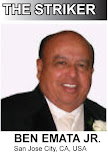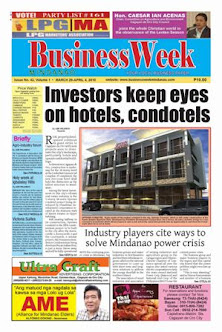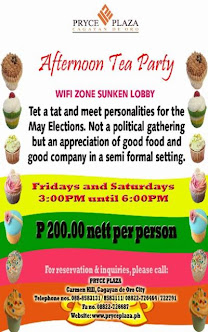Filipino food in California
WHEN we first arrived in the U.S. in 1977, we settled in San Diego, California known to be a Navy town. Many Filipinos enlisted in the U.S. Navy. The presence of Filipinos in San Diego plus our relatives and friends made us feel a bit at home. In spite of the Filipino population in San Diego, there were no Filipino stores and restaurants. For groceries, we had to drive to downtown San Diego and bought our food stuff, specially rice from a Chinese store called Wo Chee Chong. From other Filipino friends we learned to be creative in cooking Filipino food. We had to learn substitutes for Filipino vegetables, spices and ingredients.
There was one tiny restaurant that served breakfast for $1.99 with toast, bacon and eggs. We would sometimes have breakfast there. The owners were Filipinos who later became our friends. One day, I suggested to them to convert their eatery into a Filipino restaurant but they said, it would not prosper because there would not be enough Filipino customers. Within a year, another Filipino couple bought the restaurant from them and called it “Point Point” or “turo-turo” in our lingo. It was a hit. There was always a long line of customers and the tiny restaurant with only 2 tables could not accommodate its Filipino patrons. Most of the orders had to be take-outs. That was the first Filipino restaurant that I knew in California. The owners would later open a branch in Los Angeles.
It would take almost a year before more Filipino restaurants, sari-sari stores opened in California.
Today, in West Covina alone, there is one block of business establishments that are 85% Filipino owned. To its north is another block with more Filipino business establishments. To the west are more Filipino businesses. The city of West Covina has to name its north entrance “Manila Way”. In these 3 blocks are 4 Filipino bakeries specializing in what else but hot pandesal. There are 9 restaurants not to include the little ones inside the 2 large groceries of Seafood City and Island Pacific. There are 3 money remittance centers. Bank of America is there too and it has officers and tellers who are Filipinos. There are gift shops, beauty parlors, sari-sari stores and not so glamorous are sidewalk vendors. The two competing giant groceries have Filipino fresh produce like kalamongay, tanglad, tangcong, ampalaya, sitaw, upo, patoloa, clamansi and even banana blossoms that ridiculously sell at $4.50 a piece. Banana leaves are also sold for those who make suman and other goodies that use banana leaves. Incidentally, some of these fresh produce come from the farms and backyards of enterprising Filipinos.
One of our friends, the late George Larsen of the Cepeda family, used to grow vegetables in his backyard. His favorite was sitaw (string beans). He had more than enough for his own consumption. So when it was time to harvest, he would call us and other Kagay-anon friends to help him harvest. Then there is Vic Raagas whose hobby was fishing. He would catch lots of fishes, dry them and would give us and other friends his bulad. When we moved to Los Angeles, Joe Pimentel also used to fish and make bulad that he would give to his friends. But today Filipino vegetables and bulad are available in the groceries. I also learned how to make “hipon guinamos” that I would package and give as Christmas presents.
Aside from the restaurants available in California, there are many Filipino American caterers that include lechoneros. But some lechons are baked. Others are roasted. You can tell that a lechonero is from Mindanao because the lechon would be filled with tanglad (lemon grass). Unfortunately, there is no lechon de leche available because it is not allowed in California to slaughter a piglet. That’s what a lechonero told me.
Last Sunday, Gerlou and I had breakfast in Bamboo Bistro which also offers lunch and dinner buffet. But if we really want a classy restaurant in West Covina offering fine dining, we go to Pondahaan or Salo-Salo along California and Amar streets, respectively. For fine Filipino pastries, no one should miss Manille also along Amar Road. Manille was once featured on TV in Los Angeles.
And that’s as far as I know.
There was one tiny restaurant that served breakfast for $1.99 with toast, bacon and eggs. We would sometimes have breakfast there. The owners were Filipinos who later became our friends. One day, I suggested to them to convert their eatery into a Filipino restaurant but they said, it would not prosper because there would not be enough Filipino customers. Within a year, another Filipino couple bought the restaurant from them and called it “Point Point” or “turo-turo” in our lingo. It was a hit. There was always a long line of customers and the tiny restaurant with only 2 tables could not accommodate its Filipino patrons. Most of the orders had to be take-outs. That was the first Filipino restaurant that I knew in California. The owners would later open a branch in Los Angeles.
It would take almost a year before more Filipino restaurants, sari-sari stores opened in California.
Today, in West Covina alone, there is one block of business establishments that are 85% Filipino owned. To its north is another block with more Filipino business establishments. To the west are more Filipino businesses. The city of West Covina has to name its north entrance “Manila Way”. In these 3 blocks are 4 Filipino bakeries specializing in what else but hot pandesal. There are 9 restaurants not to include the little ones inside the 2 large groceries of Seafood City and Island Pacific. There are 3 money remittance centers. Bank of America is there too and it has officers and tellers who are Filipinos. There are gift shops, beauty parlors, sari-sari stores and not so glamorous are sidewalk vendors. The two competing giant groceries have Filipino fresh produce like kalamongay, tanglad, tangcong, ampalaya, sitaw, upo, patoloa, clamansi and even banana blossoms that ridiculously sell at $4.50 a piece. Banana leaves are also sold for those who make suman and other goodies that use banana leaves. Incidentally, some of these fresh produce come from the farms and backyards of enterprising Filipinos.
One of our friends, the late George Larsen of the Cepeda family, used to grow vegetables in his backyard. His favorite was sitaw (string beans). He had more than enough for his own consumption. So when it was time to harvest, he would call us and other Kagay-anon friends to help him harvest. Then there is Vic Raagas whose hobby was fishing. He would catch lots of fishes, dry them and would give us and other friends his bulad. When we moved to Los Angeles, Joe Pimentel also used to fish and make bulad that he would give to his friends. But today Filipino vegetables and bulad are available in the groceries. I also learned how to make “hipon guinamos” that I would package and give as Christmas presents.
Aside from the restaurants available in California, there are many Filipino American caterers that include lechoneros. But some lechons are baked. Others are roasted. You can tell that a lechonero is from Mindanao because the lechon would be filled with tanglad (lemon grass). Unfortunately, there is no lechon de leche available because it is not allowed in California to slaughter a piglet. That’s what a lechonero told me.
Last Sunday, Gerlou and I had breakfast in Bamboo Bistro which also offers lunch and dinner buffet. But if we really want a classy restaurant in West Covina offering fine dining, we go to Pondahaan or Salo-Salo along California and Amar streets, respectively. For fine Filipino pastries, no one should miss Manille also along Amar Road. Manille was once featured on TV in Los Angeles.
And that’s as far as I know.

























0 comments:
Post a Comment